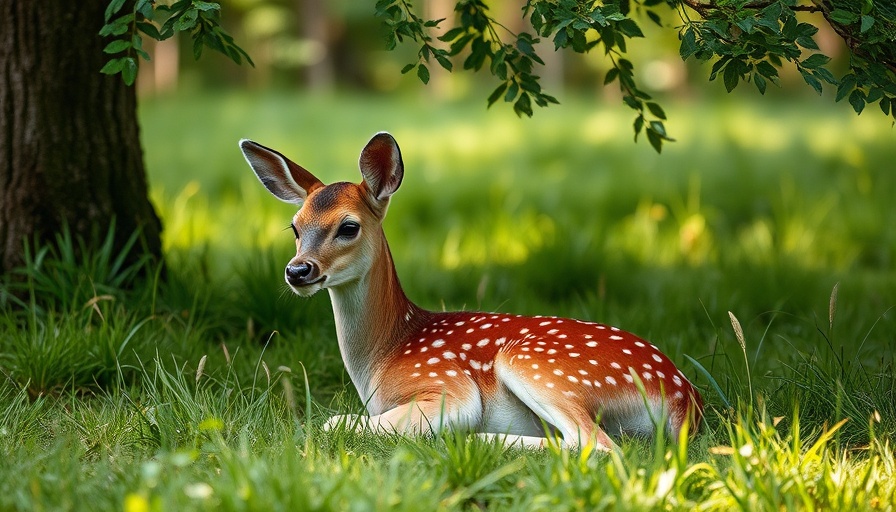
Springtime Awareness: Protecting Young Wildlife in Texas
As spring emerges in Texas, residents often find themselves witnessing the beauty of nature—one that includes young wildlife exploring their surroundings. However, Texas Parks and Wildlife Department (TPWD) is sending out an urgent message: while it may be tempting to help these animals, it’s crucial to keep your distance. Every spring, well-meaning citizens mistakenly believe they are rescuing fawns, baby birds, and other wildlife, but more often than not, this interference can jeopardize the young animals' chances of survival.
Understanding Wildlife Behavior
This advice stems from a fundamental understanding of wildlife behaviors. Female deer, for instance, take specific precautions during fawning season, which starts in early May. Mothers leave their fawns hidden for hours, returning periodically to nurse. The natural instinct for many animals is to remain hidden from predators, thus the presence of humans can cause significant stress and disrupt their natural instincts. TPWD emphasizes that unless young animals show noticeable injuries or signs of abandonment, it’s in their best interest to observe from afar.
The Role of Observation
TPWD recommends keen observation over intervention. Factors to consider include:
1. **Sound**: If the fawn isn't crying, it is likely not in distress.
2. **Physical Condition**: An animal without visible signs of injury or infestation (e.g., fire ants) is likely perfectly fine.
3. **Proximity**: Baby birds that appear to have fallen from a nest often do not need rescuing; they may be preparing for their first flights and will return to their nests soon.
The Dangers of Intervening
While rescuing does seem like a heroic action, it can lead to detrimental outcomes. Removing the young from their natural habitats can lead to orphaning, further complicating the survival of the animals. In many cases, human interaction causes more harm than good, potentially leading to heightened vulnerability for these creatures. For example, stressed animals may avoid their parents when they sense danger, leading to abandonment.
Frequently Asked Questions About Wildlife
In light of TPWD's recommendations, here are some frequently asked questions regarding young wildlife:
-
What should I do if I see a fawn alone?
It’s best to leave it undisturbed unless you observe clear signs of distress or injury. -
How can I tell if a bird needs help?
Birds that have fledged often hop on the ground and are learning to forage. They typically stay close to where they will be fed by their parents. -
Who can I call if I suspect an animal is injured?
Call the TPWD’s wildlife information line at 1-800-792-1112 for guidance.
What You Can Do Instead
Support wildlife without direct intervention. Consider the following actions:
1. **Educate Yourself**: Learn about local wildlife to understand their habits better.
2. **Share Knowledge**: Inform others about the importance of non-interference with wild animals.
3. **Promote Conservation**: Advocate for wildlife-friendly policies and support local conservation efforts.
Conclusion: Observing, Not Intervening
The key message communicated by TPWD is to “observe and don’t intervene.” As people living in harmony with nature, it is our responsibility to protect the natural behaviors of wildlife. Ensuring that young animals grow up in their natural environment not only supports their survival but enriches the Texas ecosystem for generations to come. Remember, sometimes the best way to help wildlife is to simply let them be.
 Add Element
Add Element  Add Row
Add Row 



 Add Row
Add Row  Add
Add 


Write A Comment